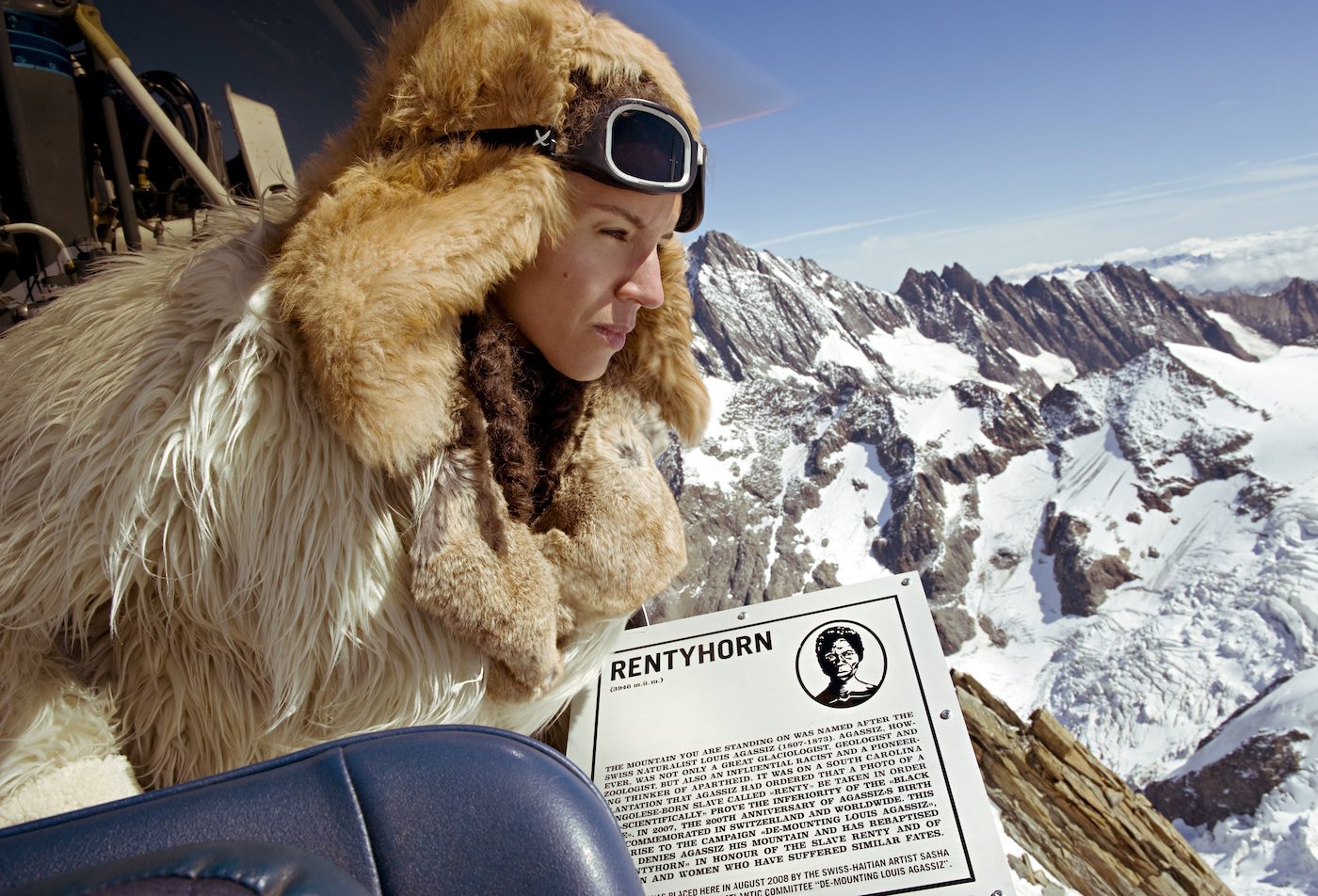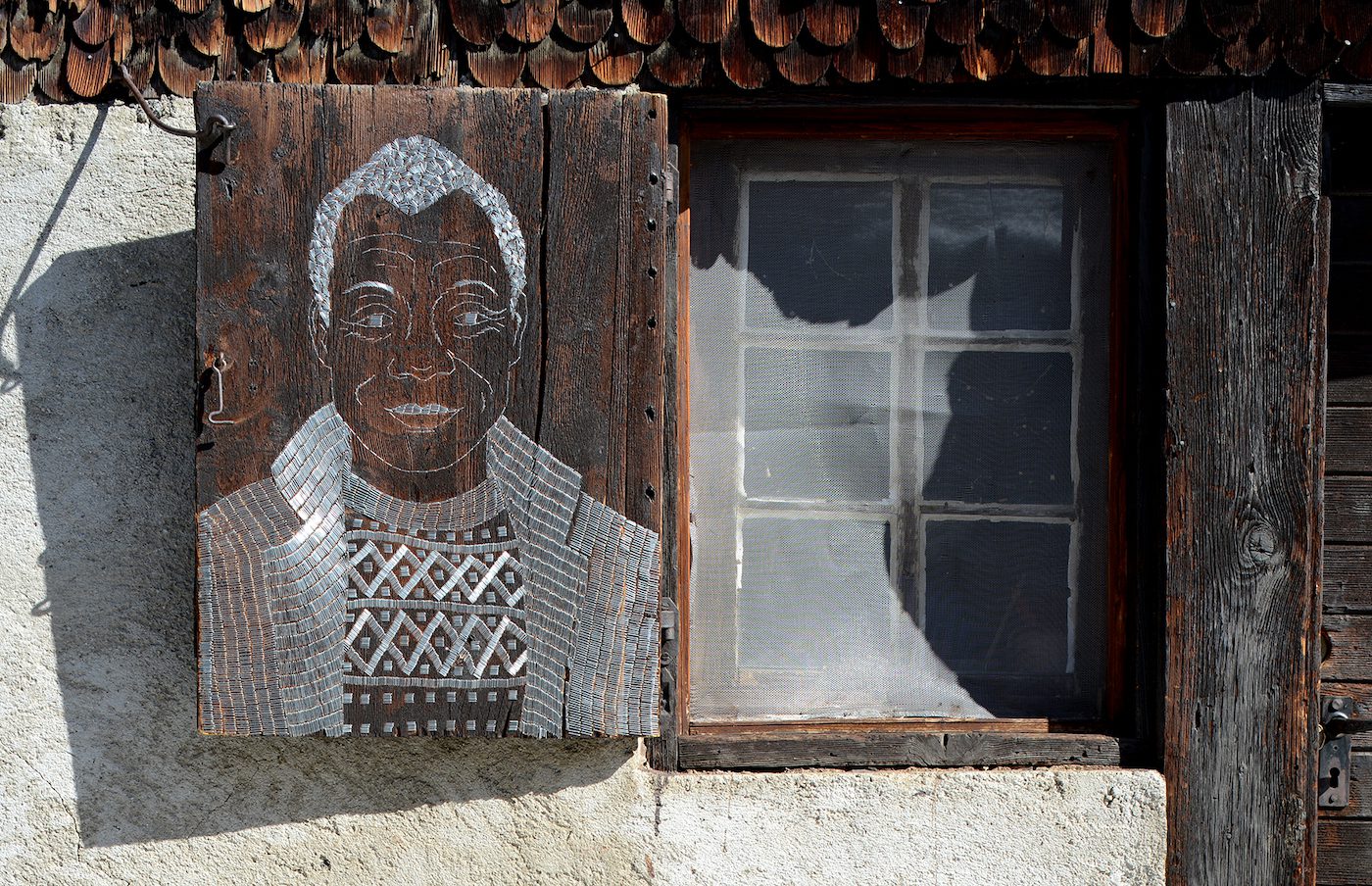The artist discusses her practice in the context of changing climatic realities and how symbolic actions can have an impact.

Sasha Huber, Rentyhorn, 2008. Commissioned photography by Siro Micheroli. Courtesy of the artist and the Museum of Contemporary Art Kiasma, Helsinki.
Contemporary And: When questions around climate, sustainability and resources are discussed in the media, arts, and societal discourses, the collective “we” is often employed, as in: “We have to find solutions to the climate crisis” or “We have to save the planet.” Who do you think is being referred to with this “we”? Should this pronoun be much more differentiated?
Sasha Huber: People who experience environmental injustice and environmental racism are the least to blame. It boils down to the fact that colonialism and its legacies constitute the main reason for the climate crisis, by which “we all” are affected. It was interesting to see that the International Panel on Climate Change included the term “colonialism” in its report summary for the first time in 2022 – so, very recently.

Sasha Huber, Tailoring Freedom – Renty and Delia, 2021. Metal staples on photograph on wood, 97 x 69 cm. Courtesy of the artist and Tamara Lanier. Original images courtesy the Peabody Museum of Archaeology and Ethnology, Harvard University (Renty, 35-5-10/53037; Delia, 35-5-10/53040).
C&: Who do you address in your work?
SH: I welcome everyone to engage with my work, if they want to. My starting point for making art comes from a deeply personal place, connected to my mother’s Haitian heritage. I have discovered that people who share a similar background connect especially strongly with my work, which celebrates and amplifies our shared history.
C&: When we speculate about our planetary future, what role can art possibly play in all this?
SH: One role of art can be to inspire and speculate around what the present and a possible future could look like. Art has the advantage that everything is possible in it and without compromise. There is freedom for imagination. I’ve had the experience that symbolic actions can have an impact and help to heal colonial wounds.

Sasha Huber, The Firsts – James Baldwin (1924–1987), metal staples on window shutter, 49 x 69 cm, 2018. Courtesy of the artist. Photo: Siro Micheroli.
C&: In the past your practice has addressed Switzerland’s and Europe’s involvements in furthering scientific racism. The ripple effects of this brutal practice continue to be visible in the dire state of our planet. Do you see the European fabrication of race as a defining factor?
SH: I have dealt with these questions within my long-term artistic engagement in the cultural activist campaign Demounting Louis Agassiz. The campaign was founded by historian and activist Hans Fässler in 2007 to raise awareness that Agassiz (1807–73) was a proponent of “scientific” racism and a pioneering thinker of segregation and “racial hygiene.” The work highlights that white supremacy is deep-rooted. It shows that it still impacts us today because it is found in all the structures of society. Institutional racism, workforce and housing discrimination, and racial profiling are just a few of the structures where this normalized power manifests itself every day. There is still a long way to go and #BlackLivesMatter will be needed for a long time to come.

Sacha Huber, You Name It, 2022. Installation photograph at Autograph in London. Courtesy of the artist and Autograph, London. Photo: © Kate Elliott
C&: How do you think your particular and beautiful practice and positions as a Haitian-Swiss artist can shape our sense of the world?
SH: Having roots in two such opposite places as Haiti and Switzerland has been a source for many questions relating to history, belonging, and memory. Exploring such questions has helped me make sense of the world we live in. I see my practice as a possibility for inviting viewers to think, to open up, to look closely at uncomfortable issues too. My partner wrote about me: “You’re lifting rocks from the past to build a bridge for the future.”
Magnus Elias Rosengarten is a writer and artist who currently lives in Berlin.
9 June – 27 August 2023
Curated by Selina Kiiskinen
Turku Art Museum, Turku, Finland
12 June – 17 September 2023
Remedies, Sasha Huber & Petri Saarikko
Curated by Joasia Krysa
Vallisaari, Finland
03 September 2023 – 07 January 2024
Rassismus im Spiegel von James Baldwin
Curated by Céline Eidenbenz
Aargauer Kunsthaus, Switzerland
ECOLOGIES
More Editorial